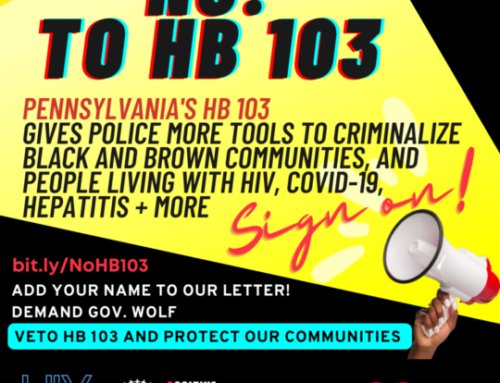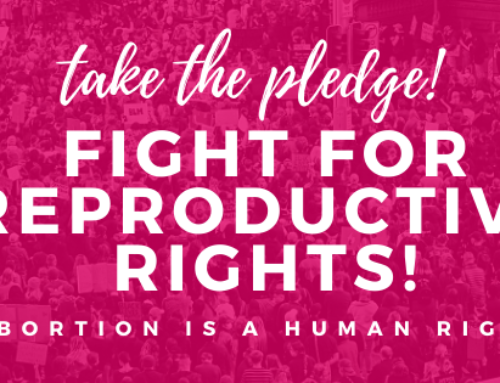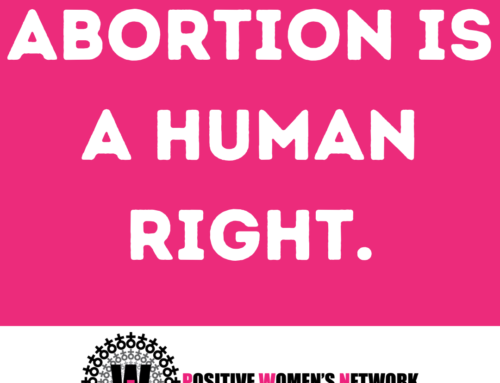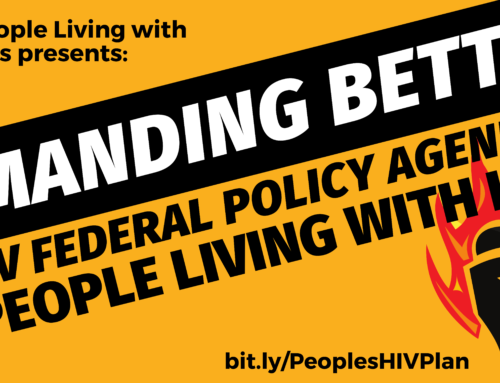
By: Loren Jones
As the oldest and only girl born to a welfare mom who had six children in nine years , way back in 1952, in North Philadelphia, I long ago accepted violence as a way of life. I didn’t realize until Junior High School, when I was bussed to a middle class white school, that not everyone yelled, sc reamed, and beat their children to get them to behave; not everyone knew someone who had been murdered on their block, and not every Christian household lived by “spare the rod, and spoil the child.” If your partner only slapped you when he was mad, so what? You were lucky. It’s not the same as a black eye or a broken arm. And of course there was no HIV.
60 years later, the world has definitely changed and it is mostly for the better. But why is it that so many poor black women, even in big cities with lots of good doctors, lots of buses and trains to get to them and free medications, still are not doing well in their fight for survival with HIV. Many are still dying sooner in an age when we should all be looking forward to living as long, and as productively as those without HIV. Could it be the violence that is still in so many of our lives?
I have lived with HIV for at least 28 years that I know of, and I am fortunate to be both a member of the Board of Directors for Positive Women’s Network-USA, and a member of Alameda County’s Ryan White Part A Community Collaborative Planning Council. As part of our yearly Ryan White Needs Assessment Activity required by HRSA, I was able to make a push to have some of our consulting money spent on gathering data and making recommendation for improving the quality of life and survival rate of HIV+ women in our community who also have histories of Intimate Partner Violence (IPV).
Our 2013 survey of 97 consumers showed that 26 (more than 1 in 4) were survivors of IPV. 75% of the people who completed the survey were People Living with HIV and 92% of those who are positive experienced IPV. More than half of those who experienced IPV felt that their experience with IPV affected whether they became HIV+ or had an impact on their health.
62% of the survey respondents were women, 20% white, 27% African American, and 28% Latino.
Here are a few follow-up recommendations to aid us in charting a pathway to a better quality of life, self esteem and health outcomes for HIV-positive people who experience intimate partner violence.
- Increase the existence and availability of psychosocial and clinical supports for perpetrators of IPV (both male and female) to help them recognize and deal with their behaviors in order to heal themselves, gain new skills to handle triggers, and reduce violence, and have healthier relationships overall.
- Raise visibility about how to identify IPV for oneself or others, promote IPV resources, and reduce shame, and stigma about IPV through a social marketing/and or social media campaign.
- Ensure the existence and appropriateness of IPV services for both survivors and perpetrators of IPV.
- Needed services may include: housing support, assistance with protective custody of children, substance abuse treatment, mental health support, emergency medical treatment, employment assistance, childcare, assistance with ADAP, assistance with new healthcare under the Affordable Care Act, and other needed government programs, and help with developing a safety plan.
Of course our service providers first need to ask the question about possible violence in the lives of their clients and be educated to provide trauma informed treatment. I am confident however, that if we don’t let the flag fall, this could be the year that we make progress in breaking the links between women, violence and HIV.
Survey information and recommendations provided by: Facente Consulting, Richmond, CA (
www.facenteconsulting.com)
 By: Loren Jones
As the oldest and only girl born to a welfare mom who had six children in nine years , way back in 1952, in North Philadelphia, I long ago accepted violence as a way of life. I didn’t realize until Junior High School, when I was bussed to a middle class white school, that not everyone yelled, sc reamed, and beat their children to get them to behave; not everyone knew someone who had been murdered on their block, and not every Christian household lived by “spare the rod, and spoil the child.” If your partner only slapped you when he was mad, so what? You were lucky. It’s not the same as a black eye or a broken arm. And of course there was no HIV.
60 years later, the world has definitely changed and it is mostly for the better. But why is it that so many poor black women, even in big cities with lots of good doctors, lots of buses and trains to get to them and free medications, still are not doing well in their fight for survival with HIV. Many are still dying sooner in an age when we should all be looking forward to living as long, and as productively as those without HIV. Could it be the violence that is still in so many of our lives?
I have lived with HIV for at least 28 years that I know of, and I am fortunate to be both a member of the Board of Directors for Positive Women’s Network-USA, and a member of Alameda County’s Ryan White Part A Community Collaborative Planning Council. As part of our yearly Ryan White Needs Assessment Activity required by HRSA, I was able to make a push to have some of our consulting money spent on gathering data and making recommendation for improving the quality of life and survival rate of HIV+ women in our community who also have histories of Intimate Partner Violence (IPV).
Our 2013 survey of 97 consumers showed that 26 (more than 1 in 4) were survivors of IPV. 75% of the people who completed the survey were People Living with HIV and 92% of those who are positive experienced IPV. More than half of those who experienced IPV felt that their experience with IPV affected whether they became HIV+ or had an impact on their health.
62% of the survey respondents were women, 20% white, 27% African American, and 28% Latino.
Here are a few follow-up recommendations to aid us in charting a pathway to a better quality of life, self esteem and health outcomes for HIV-positive people who experience intimate partner violence.
By: Loren Jones
As the oldest and only girl born to a welfare mom who had six children in nine years , way back in 1952, in North Philadelphia, I long ago accepted violence as a way of life. I didn’t realize until Junior High School, when I was bussed to a middle class white school, that not everyone yelled, sc reamed, and beat their children to get them to behave; not everyone knew someone who had been murdered on their block, and not every Christian household lived by “spare the rod, and spoil the child.” If your partner only slapped you when he was mad, so what? You were lucky. It’s not the same as a black eye or a broken arm. And of course there was no HIV.
60 years later, the world has definitely changed and it is mostly for the better. But why is it that so many poor black women, even in big cities with lots of good doctors, lots of buses and trains to get to them and free medications, still are not doing well in their fight for survival with HIV. Many are still dying sooner in an age when we should all be looking forward to living as long, and as productively as those without HIV. Could it be the violence that is still in so many of our lives?
I have lived with HIV for at least 28 years that I know of, and I am fortunate to be both a member of the Board of Directors for Positive Women’s Network-USA, and a member of Alameda County’s Ryan White Part A Community Collaborative Planning Council. As part of our yearly Ryan White Needs Assessment Activity required by HRSA, I was able to make a push to have some of our consulting money spent on gathering data and making recommendation for improving the quality of life and survival rate of HIV+ women in our community who also have histories of Intimate Partner Violence (IPV).
Our 2013 survey of 97 consumers showed that 26 (more than 1 in 4) were survivors of IPV. 75% of the people who completed the survey were People Living with HIV and 92% of those who are positive experienced IPV. More than half of those who experienced IPV felt that their experience with IPV affected whether they became HIV+ or had an impact on their health.
62% of the survey respondents were women, 20% white, 27% African American, and 28% Latino.
Here are a few follow-up recommendations to aid us in charting a pathway to a better quality of life, self esteem and health outcomes for HIV-positive people who experience intimate partner violence.







